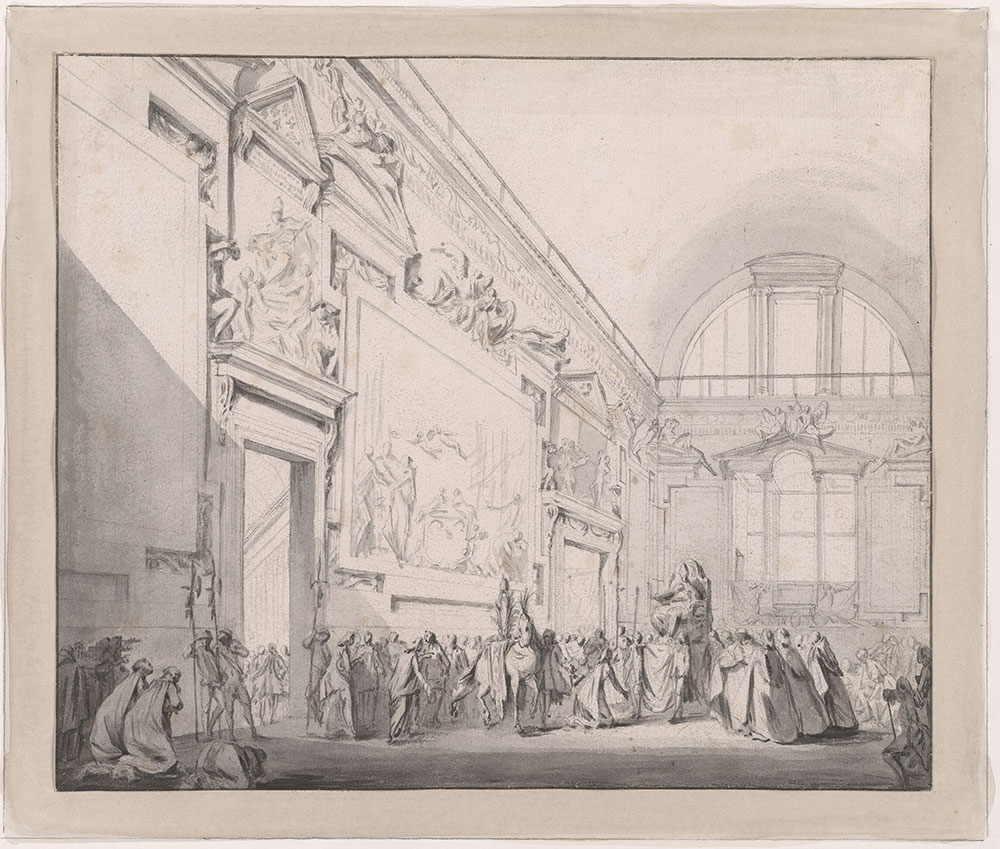
Barbault arrived in Rome in 1747. Although he failed to win a place at the French Academy, he traveled to Italy at his own expense but by 1749 had won the favor of Jean-Francois de Troy, then the director of the French Academy, and became a pensionnaire. He also soon after his arrival began collaborating with Piranesi on a series of printed views of the city; both contributed plates to the Varie vedute di Roma antica e moderna, a compendium of small Roman views distributed by Roman publishers in the 1740s. He would work with Piranesi through the 1750s, etching the figures in 14 plates of Piranesi's Antichità Romane of 1756, and in the 1760s he produced his own collection of Roman views, Les Plus Beaux Monuments de la Rome ancienne.
This drawing, however, dates to early in his Roman career, made in preparation for an independent engraving, signed and dated 1748. Barbault developed a sort of by-line in recording events at Rome's festivals, though this must be among the earliest of his works in the vein. It shows the ceremony of the Chinea, in which every June 29, the Kingdom of Naples paid homage to the Pope by presenting him with a white horse called the Chinea and a cup with gold ducats. Set in the Sala Regia of the Vatican palace, it shows Fabrizio Colonna, grand constable of the Kingdom of Naples, offering the tribute to Pope Benedict XIV on behalf of the Kingdom of the Two Sicilies. This annual tradition dated back to the eleventh century.
